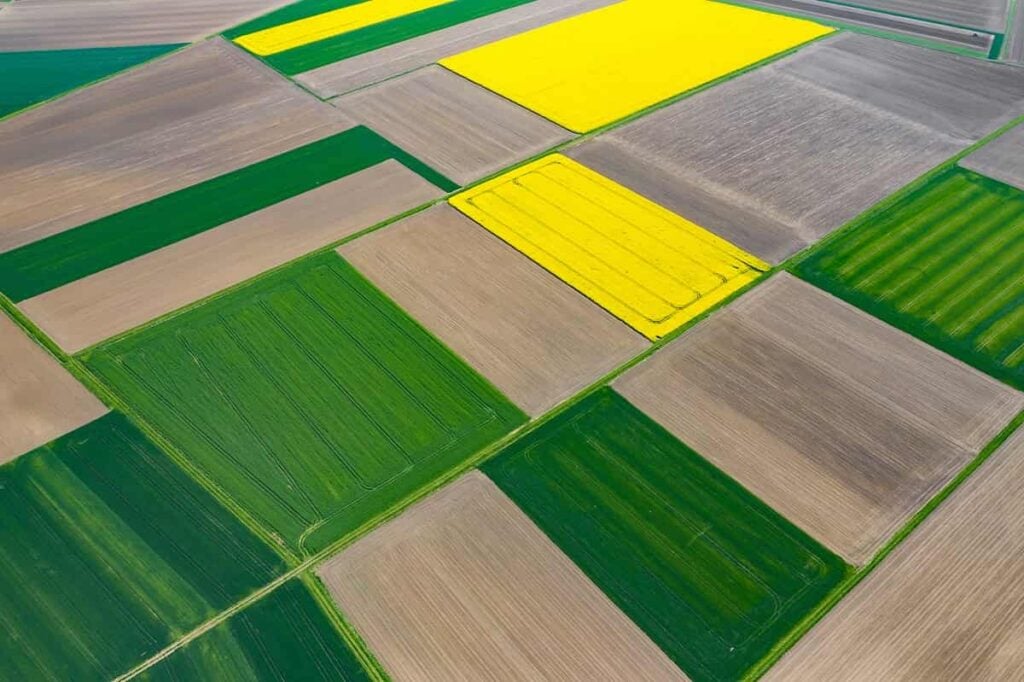Umbra Lab Makes Space-Based Radar Affordable
Table of contents

We recently sent our hardest drinking working MBA to New Zealand to milk an article out of the technological innovations underway in the country’s dairy industry. In that article, we noted how agriculture companies like the Hamilton-based Livestock Improvement Corporation now leverage satellite imagery to assess the amount of grass available to feed New Zealand’s cows, as part of a larger trend of turning geospatial intelligence into business intelligence thanks to cheaper access to space.
However, it’s not always easy to discern if the grass is truly greener in New Zealand (spoiler alert: it is) because parts of the country are often masked by clouds, making it impossible for optical sensors aboard satellites to collect imagery. Ditto for nighttime skies. That’s why there’s been a surge, as we reported last year, in the number of companies developing space-based radars for small satellites. Among the startups jockeying for relevance in the emerging market is Santa Barbara, California-based Umbra Lab.

Last year, the company was in full stealth mode, though details about its specialized synthetic aperture radar technology leaked out through investors Starbridge Venture Capital and Crosscut Ventures. At the end of 2019, Umbra Lab was finally ready to talk, and co-founder Gabe Dominocielo reached out to us to talk about why what his company is doing is so out of this world.
In a nutshell, and in his own words: “Our satellite can produce better data than anything else on the market. And our plan is to provide that data at a very, very low cost. So the geospatial intelligence providers can consume the data at a low cost and make a lot of money. I don’t think it’s a crazy idea, but apparently, it’s insane.”
Let’s unpack all that, beginning with Umbra Lab’s technology.
The “Perfect” Antenna
First, we need to understand some basics about synthetic aperture radar (SAR) that doesn’t require graduate-level coursework. You might already know that a radar system itself uses radio waves, microwaves or other regions of the electromagnetic spectrum – traveling at the speed of light – to detect objects and gather information such as velocity or location. The radar emits waves or pulses that are then reflected back to the instrument.
Update 02/02/2021: Umbra has raised $32 million in funding for their radar satellite constellation. This brings the company’s total funding to $44.6 million to date.
SAR is an imaging radar system that emits pulses of microwaves down toward the Earth and measures the strength and time it takes for the energy that is scattered back to the antenna to return. The synthetic part in the name refers to how the motion of the satellite (or plane, spacecraft, etc.) synthesizes an aperture that is much bigger than the actual antenna hardware. The bigger the aperture, the finer the image resolution.

Umbra Lab’s co-founder and CEO David Langan has developed what Dominocielo called the “perfect parabolic mesh antenna,” which is bigger than 10 square meters (roughly 10 square yards, for you Yanks) aboard a 50-kilogram satellite that can generate 500 watts of power. At 60% efficiency, the Umbra Lab antenna can “hear” the backscattered signal very clearly, according to Dominocielo. “The novel thing is our spin on the parabolic mesh antenna,” he said.
Low Cost, High Resolution
That innovation means that Umbra Lab’s SAR satellites will be able to capture imagery with a resolution of 25 centimeters, which is less than a foot. Much bigger, far more expensive satellites can’t match that sort of detail. The company is planning for a 12-satellite constellation with hourly revisits in high resolution.
A number of other NewSpace startups are also launching SAR satellite constellations promising high-res products. Finnish satellite operator ICEYE, for example, already has several in orbit producing radar imagery at one-meter resolution with satellites about twice the size of those being built by Umbra Lab. San Francisco-based Capella Space is shooting for a constellation of 36 satellites with resolution of a half-meter or less.

However, Dominocielo claimed that none will be able to match Umbra Lab in cost or resolution quality of the imagery. The price of Umbra Lab’s SAR imagery will be on par with optical imagery of similar resolution, he said. That’s partly thanks to the low cost of building and launching the satellites, as well as the fact that there’s much less post-processing of the raw imagery. Other SAR satellite providers, Dominocielo added, are doing what’s called multi-looking to claim sub-meter imagery, which means the imagery is derived from numerous low-quality images that a computer algorithm blurs together into a final product.
“So you’re just taking a bunch of images and smashing them on top of each other, and then trying to make them clear,” he explained. “It’s more of like a representation; it’s like a picture of a picture. But you lose all the measurements from the phase history, and the measurements are what are most valuable in radar. You might as well use an optical image. [Multi-looking is] also incredibly time-consuming and expensive.”
A B2B Business Model
Umbra Lab is also taking a different approach in its business strategy compared to many picturing-snapping smallsat companies out there. Rather than trying to compete with the likes of Orbital Insight, which offer a suite of geospatial intelligence analytics, Umbra Lab will sell its SAR-based imagery as a B2B service directly to geospatial analytics firms.
“We are a pixel provider, which makes us very, very different,” Dominocielo said.
The four-and-a-half-year-old company doesn’t so much want to disrupt the geospatial intelligence market, as help it expand beyond its current limitations. Providing relatively cheap, abundant, and high-resolution SAR imagery will make that happen because suddenly companies will have access to analytics based on much better data. It’s not just about counting cars in parking lots from satellite pictures but being able to monitor things like oil pipelines or railroad bridges from space at a price point that’s cheaper and at least as good as anything on the ground or in the air, according to Dominocielo.

“I think that the real game-changer – and the reason why it hasn’t happened is because the data is so damn expensive – is being able to use interferometry to look at critical infrastructure,” he said.
For example: One Umbra Lab customer who is interested in SAR imagery to survey potential properties for development currently pays up to $50,000 for what Dominocielo said he could provide for about $1,000.
“You have to create value for your customers,” he said. “Right now, there’s nothing coming to the market or on the market that is changing the status quo. … You need to totally transform how people are used to [leveraging] the data.”
Conclusion
Dominocielo didn’t entirely drop the startup stealth speak during our phone call. He declined to give specifics on just how much money Umbra Lab has raised from its investors (“enough money to build and launch multiple satellites”) or the cost of a single satellite mission except to say it was in the “single-digit millions,” which would certainly put it on the cheap end of the spectrum. There’s also no firm commitment on a launch date, though it’s likely at least one or more satellites will make it to orbit this year and that Umbra Lab will scale the size of the constellation as market demand increases.
Dominocielo said his reticence is not so much about keeping secrets but letting his company’s actions speak for themselves. “We don’t like to make forward looking statements,” he said. “Rather than saying, ‘This is what we plan to do, and see how amazing we are.’ We actually like to do it and then talk.”
Sign up to our newsletter to get more of our great research delivered straight to your inbox!
Nanalyze Weekly includes useful insights written by our team of underpaid MBAs, research on new disruptive technology stocks flying under the radar, and summaries of our recent research. Always 100% free.















No mention of Umbra Lab being a “private company”?